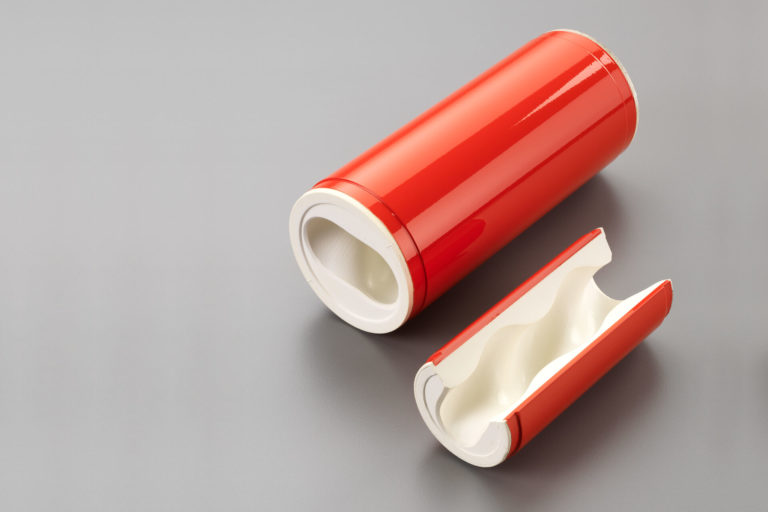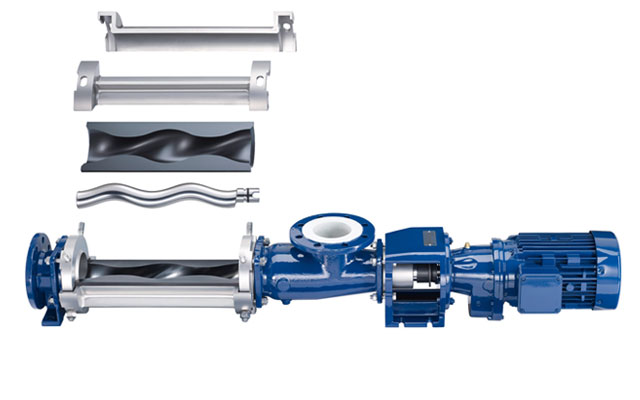6 MPa; Class 2: The maximum working pressure is 1.2 MPa; Level 3: The maximum working pressure is 1.4 MPa; Due to the various conditions of the conveying medium, for the medium with severe abrasiveness, the appropriate number of stator stages should be selected according to the requirements for the conveying pressure. 6 MPa; Class 2: The maximum working pressure is 1.2 MPa; Level 3: The maximum working pressure is 1.4 MPa; Due to the various conditions of the conveying medium6 MPa; Class 2: The maximum working pressure is 1.2 MPa; Level 3: The maximum working pressure is 1.4 MPa; Due to the varying conditions of the conveying medium, the maximum working pressures for each class are as follows: 6 MPa; Class 2: The maximum working pressure is 1.2 MPa; Level 3:
Single-screw pumps are typically used for transporting liquids that have a higher viscosity and liquids that contain particles. This is because of the structural characteristics of single-screw pumps, which make them well-suited for these tasks. Because of this, deciding how many times the pump should turn over is of the utmost small food grade pump significance if one wishes to achieve the best possible results.
The following is a list of the rubber materials that can be used for the bushing of a single screw pump:
Rubber is both a product of and a component of the single-screw pump bushing, which is a vulnerable component due to the possibility that either the bushing or the rubber will detach from the steel pipe that it is attached to. Rubber is both a product of and a component of the single-screw pump bushing. Performance: The performance table or characteristic curve of the general single-screw pump is the data when 20 °C clean water is used as the medium (viscosity is 1cst), and the flow rate and shaft power are different for conveying different viscosities. Performance: The performance table or characteristic curve of the general double-screw pump is the data when 20 °C clean water is used as the medium (viscosity is 1cst). Performance: The data that are used to create the performance table or characteristic curve of the standard double-screw pump are the results obtained when clean water at 20 degrees Celsius and a viscosity of one cst is used as the medium.
Performance: The performance table or characteristic curve of the general single-screw pump is the data when 20 °C clean water is used as the medium (viscosity is 1cst), and the flow rate and shaft power are different for conveying different viscosities. Performance: The performance table or characteristic curve of the general double-screw pump is the data when 20 °C clean water is used as the medium (viscosity is 1cst). Performance: The data that are used to create the performance table or characteristic curve of the standard double-screw pump are the results obtained when clean water at 20 degrees Celsius and a viscosity of one cst is used as the medium.
Shaft seal: There are two different kinds of mechanical seals and packing seals that can be used, and the structures of these two types of seals can be interchanged depending on the requirements and the medium that is being conveyed. Low-speed motor drives can generally be broken down into one of three categories: those with direct connection (6-stage or 8-stage), those with gear reduction motor drives, and those with continuously variable motor drives.
The length of oil tankers that are allowed to navigate inland rivers and canals is typically limited to no more than 120 meters, and their width is typically limited to no more than 10 meters. This is done to protect the environment. The typical value of their deadweight tonnage is lower than 4,000 tons, and the typical number of stator manufacturing cargo oil tanks on board ranges from eight to ten. Because of the limited draught depth of inland rivers, the general hull design is relatively flat, and the depth of the cabin is generally not more than 5 meters, which is why the application of the screw pump is generally installed on the deck in the middle of the ship. Since the suction height is approximately 4.8 bar, the inlet pressure of the pump will basically reach -0.3 bar when the pump is turned on, or when the oil in the faraway tank is unloaded; since the pump's height of suction is approximately 4.8 bar. This is because the pump was installed on the deck rather than the floor below it. When the oil level in the cabin drops to a low level while the screw pump is being used, the screw pump will almost always choose to control the speed reduction operation through the frequency converter. This occurs when the oil level in the cabin drops to a low level. When the oil level in the cabin drops to a low level, this issue will manifest itself. Although the standard speed is 1500 revolutions per minute, the speed is typically reduced to 750 when the liquid level is getting low. After the oil extraction process is complete, the final oil collecting pan will typically contain no more than a few liters of medium in its remaining space.
The selection of the mechanical seal for the twin-screw pump in this typical application condition needs to take into consideration the fact that the pump frequently needs to deal with the working conditions of evacuation and negative pressure, and the friction surface of the mechanical seal may not be well lubricated and cooled. Additionally, the mechanical seal selection process needs to take into consideration the fact that the friction surface of the mechanical seal may not be well lubricated and cooled. This is because the pump must frequently contend with these working conditions in order to function properly.
Additionally, when self-priming conditions are present, the static ring has the potential to induce axial movement, which can lead to bump damage occurring prior to both the dynamic and static rings. This can be avoided by ensuring that self-priming conditions are met. In order to avoid this potential risk, the static ring of the mechanical seal must be a G13 static ring rather than a conventional G9 static ring, and a static ring gland must be installed in order to prevent axial movement damage. In addition, this potential risk can be avoided by using a G13 static ring rather than a conventional G9 static ring. In addition, this potential risk can be sidestepped by employing a G13 static ring rather than the stator manufacturing process more commonplace G9 static ring. When the rated oil viscosity is greater than 380cSt, the mechanical seal's static ring needs a positioning pin in order to stop it from rotating. This is because the oil is more viscous. This is necessary in order to avoid the damage and failure of the secondary seal O-ring, which is caused by the rotation of the follower ring of the static ring when the pump is started. This can be avoided by doing what is described in the previous sentence. In a general sense, the following justifications are applicable:
1. There are two things that are reversed: the first is that the positive and negative poles of the motor are switched, and the second is that the inlet and outlet are switched. Both of these things are incorrect. Either make some adjustments to the inlet and outlet of the motor, or rewire it entirely, so that the issue can be resolved. It would appear that the valve is in the closed position. If the pipeline's valve is not opened before the twin-screw pump is turned on, the liquid will not be able to move through the pipeline without causing any disruptions, which will render the pump ineffective. Either the oil suction pipe is not fully submerged in the liquid, or the height of the suction is set too high. Both of these possibilities are possible. Even though the twin-screw pump has a feature that allows it to prime itself, you still need to make sure that the inlet oil suction pipe is completely submerged progressive cavity pump food grade in the liquid, and the inlet height shouldn't be too high; otherwise, it will cause air suction, which will result in the pump idling. Even though the pump has a function that allows it to prime itself, you still need to make sure that the inlet oil suction pipe is completely submerged in the liquid.
4. A circumstance such as this will lead to a problem with less oiling being distributed because either the filter area is too small or the number of meshes is too high. This will result in an increase in the inlet resistance, which will cause the pump to work harder when it is self-priming, and the oiling will be reduced as a direct consequence of this. It's possible that the safety valve is stuck open, or that there's a leak in the inlet pipeline. Either one could be the cause of the problem.
6. Initially, it was selected based on the viscosity at the temperature that was specified, and this remains the case today. If the viscosity were to increase, this would have the indirect effect of making the pipeline's resistance to flow greater, which would then result in more self-absorption and less oiling. If the viscosity were to decrease, this would have the direct effect of resulting in less oiling and more self-absorption.
